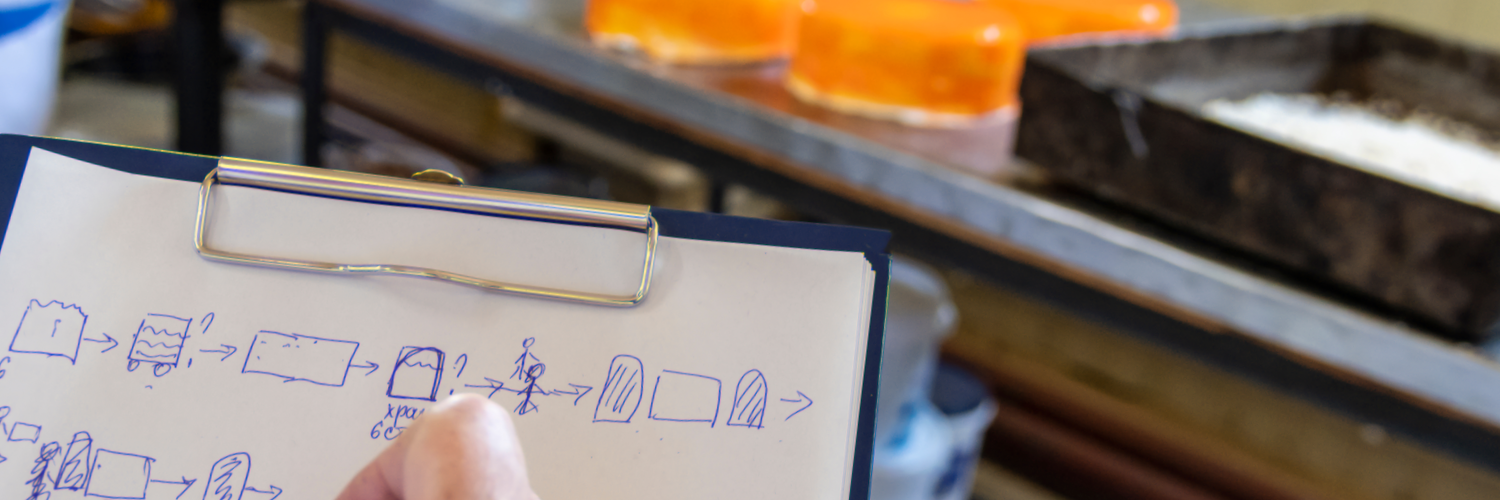Have you been confused with the process for the COVID-19 vaccine rollout in your area or state? You’re not alone. The rollout is a work process, and most of us can agree there have been multiple breakdowns within that process. When problems occur, like miscommunications, hours-long vaccination lines, transportation delays and scarcity of the vaccine, it is important to learn from these incidents in order to make improvements and reduce the risk of them happening again. This is the case in your company too.
Everything achieved within an organization is dictated by its work processes. If you have a breakdown, analyzing the incident and improving the work process are necessary for risk mitigation. A valuable tool for analyzing your process is the process map—a visual representation of a work process. The primary value of the process map is its ability to help communicate the details of how work is done. In this blog, I’ll discuss three key benefits to using a process map.
A Process Map Facilitates Communication
One key benefit of capturing a visual process map is that you increase the understanding and clarity of the actions taken when the problem occurred. The process map clearly ties the analysis of a problem to the breakdown within the process. Since people see the steps of the process in a visual format as they talk about what didn’t work, the discussion becomes much more specific instead of talking in generalities. It’s these specific discussions that will help identify specific solutions.
For example, instead of working with a common generic response such as, “The process is all messed up,” you can have the people involved take you through each step of the process and pinpoint which specific step(s) didn’t go well. People are more than willing to complain about what didn’t go well. It’s these small details that must be revealed in order to get to the specific causes and identify specific solutions to prevent recurrence.
A Process Map Avoids Perceptions of Blame
It is much easier to collect information from those closest to the problem with the aid of the map. The people closest to the problem have firsthand information of what happened and are therefore critical to improving it. Unfortunately, collecting the information is not always easy. It is common for the people closest to the problem to get defensive when questioned about why a problem occurred. This fear typically comes from a perception of blame that can creep in during an investigation. Using a process map to help collect information will help alleviate fear and defensiveness.
To make the point, here are two different approaches. If I point my finger at you and ask, “Why were you late to work this morning?”, you might get a little defensive and say, “My alarm clock didn’t wake me up on time.” Notice the person is getting defensive and deflecting the blame to something else. Blaming people or things doesn’t solve any problems. A different approach would be to start by having you explain the steps of the process and begin capturing it on the process map. As we build the map, I would then point to the map and ask, “Which of these steps in the process didn’t go well?” With this question, I am still focusing on the actions that took place, but instead of the emphasis being on the person’s actions, the focus is on the steps in the process. The subtle difference in this approach depersonalizes the incident and removes the perception of blame, and therefore, makes it much easier to collect specific details about the incident.
A Process Map Facilitates Implementation of Solutions
Lastly, the third benefit of using process maps occurs when implementing solutions. A common concern that many people have is that a chosen solution will create a larger problem than the one you are trying to solve. Hence the phrase, “turning a headache into a heart attack.”
Since solutions from your investigation make specific changes to the work process, one way to prevent this is to clearly understand how the solutions will affect the process both upstream and downstream from the changed step in the work process. Because of this, the same process maps built while investigating an incident can be used to evaluate possible solutions and the impact they would have on the process.
The visual nature of the process map facilitates this discussion and helps to keep everyone involved on the same page. Once the impact is understood, the process map can also be a helpful tool educating those affected by the change to their processes.
Process maps complement root cause analysis. Once the problem is analyzed understood in detail, the investigation will back into those work processes that had breakdowns. From there, you can focus on implementing solutions and improving your work processes—whether it’s a national vaccine rollout during a worldwide pandemic or simply waking up for work on time.











